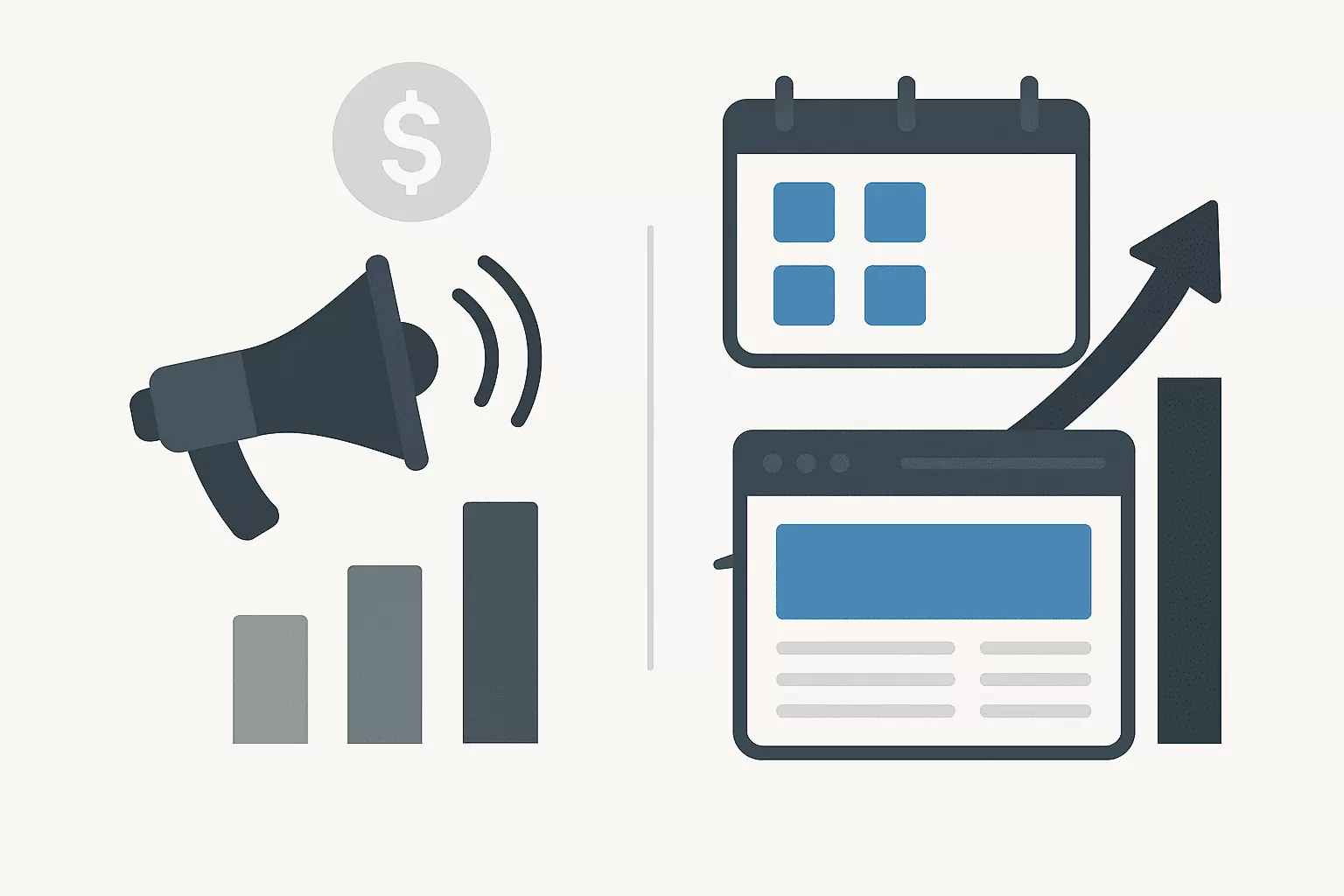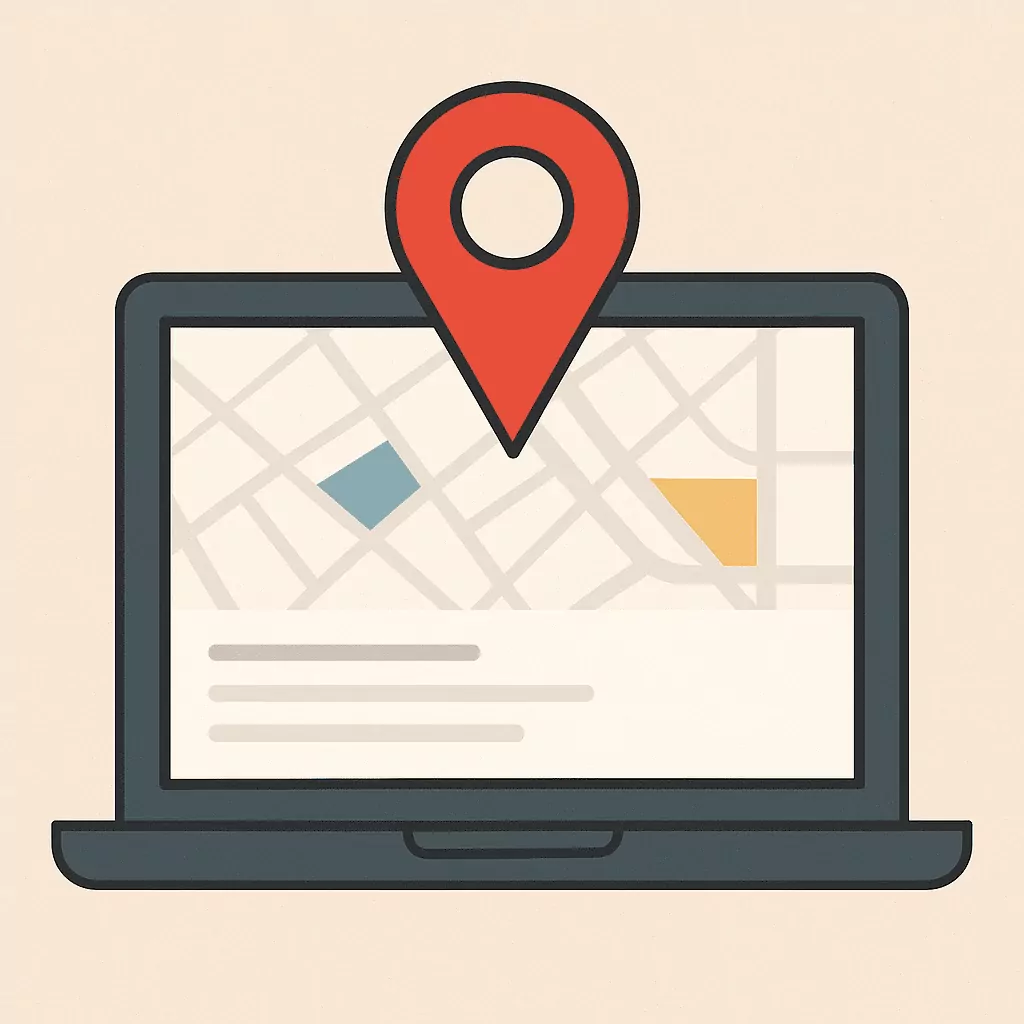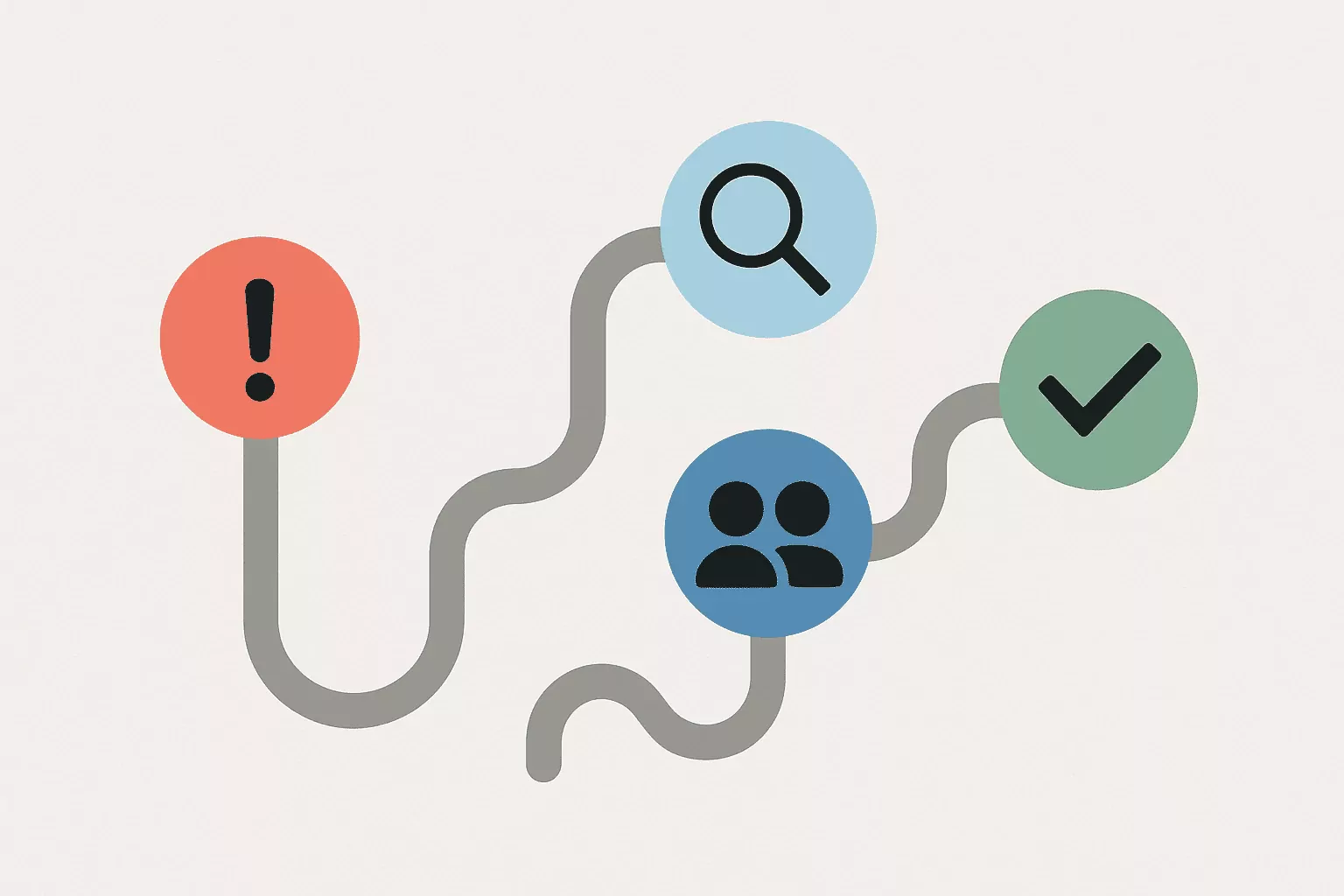Why 'More Traffic' Won't Save Your Business: The Smart Owner's Guide to Building Momentum That Lasts.
by Peter Gillett
Marcus runs a premium kitchen remodeling firm in Atlanta, doing $3.2M/year.
Last year, he underinvested — spending just $78,000 on Google and Facebook ads.
He got 42 qualified leads at $1,857 each. With a 15% close rate, that’s ~6 projects and $360K in revenue — not bad, but not scalable.
There was no content, no visibility lift, and no retention system. The second the budget stopped, the leads disappeared.
This year, he’s shifted into growth mode — moving to a $150K total marketing budget, but only $30K goes to ads.
The rest fuels a system: content, local authority, referral assets, and expert positioning.
He’s now booking 2–4 high-value projects/month — with better margins, fewer tire kickers, and a pipeline he controls.
The difference?
He stopped chasing traffic. He started building momentum.
Most service business owners operate under a dangerous assumption:
More visitors = more clients.
It’s logical. It’s measurable.
And it’s dead wrong.
Here’s what actually happens:
- You bleed budget on platforms built for e-commerce — not $50K+ services.
- More spend brings worse leads: tire kickers, price shoppers, and "just curious" calls.
- Acquisition costs crush margins. At $2,000+ per client, the ROI gets tight fast.
- You’re stuck in the ad hamster wheel — competing with every contractor with a credit card.
Even with a strong close rate, the math is fragile.
And the second you stop spending?
So does your pipeline.
That’s not leverage.
That’s exposure.

Smart business owners don’t chase leads.
They build momentum — systems that compound over time instead of campaigns that expire monthly.
Let’s compare:
Med Spa A spends $15K/month on Google and Facebook ads.
When the budget stops, leads dry up.
Med Spa B invests the same $15K into local authority content, expert-driven blogs, and hyper-targeted media campaigns.
After 12 months, their content still ranks, still refers, and still builds trust across channels.
Momentum is the difference between visibility that dies… and visibility that compounds.
The Four Pillars of Business Momentum
1. Authority That Compounds
Most service businesses treat content like a to-do list. But real authority comes from creating assets that rank, resonate, and position you as the expert over time.
Traffic campaigns target strangers.
Authority content builds recognition with your entire market — day after day.
When prospects look up your services, they should find helpful answers, insightful content, and consistent messaging across Google, YouTube, and trusted media — not just ads.
Example: A design-build firm publishes monthly articles and podcast-style interviews answering client questions like “What should a $100K kitchen include?” After six months, they rank for key terms and attract leads who already trust them.
The compound effect:
Every article, quote, or clip adds to your credibility.
By the time someone calls, they’re already convinced.
2. Retention Systems That Multiply Value
Most of the market focuses 90% of their marketing on cold acquisition — but retention is where momentum multiplies.
Client-focused content — post-purchase care, maintenance tips, reminder campaigns, FAQ videos — keeps relationships warm and repeat bookings active.
Example: A med spa sends out educational blogs and podcast updates about skincare routines post-treatment. Within a quarter, rebooking rates spike, and referrals increase — without spending a dollar on new ads.
The compound effect:
Clients stick around longer, spend more, and refer others.
You build stability — not just sales.
3. Strategic Positioning That Eliminates Competition
Teaching what others try to sell immediately changes the dynamic.
Instead of saying “here’s what we offer,” businesses that publish “here’s what clients need to know before they buy” become the trusted source — and stop competing on price.
Example: A remodeling company shifts from “we do custom kitchens” to publishing “7 Budget Mistakes That Tank Kitchen Projects.” The message changes. So does the type of client they attract — and the rates they can charge.
The compound effect:
The market starts to associate your name with clarity, not cost.
You own the category — and the buyer’s trust.
4. Multi-Channel Presence That Builds Trust
It’s not about one blog, video, or post. It’s about being seen consistently across the platforms your ideal clients already use.
One piece of content — when repurposed into video, social, email, podcast, blog, and third-party distribution — creates repetition, which builds recognition and trust.
Example: A consultant shares a single insight that gets turned into a blog, short video, podcast quote, and SlideShare guide. Over 90 days, they’re showing up in search, inboxes, and social feeds — all from one well-built topic.
The compound effect:
Trust grows with repetition.
The more familiar your brand feels, the more likely people are to choose you.
Your Momentum Framework (DIY Edition)
The 6 Steps to Replace Traffic Chasing with Authority and Leverage
Step 1: Audit Your Visibility
Search your top 3 services + your city.
“Kitchen remodeling Atlanta”
“Tax planning for business owners Tampa”
“Laser hair removal San Diego”
What shows up?
- Are you ranking?
- Are competitors dominating?
- Are you visible on trusted platforms — not just your own?
Most business owners discover they’re completely invisible in the places that matter most.

Step 2: Choose Your Authority Topic
Pick one problem your best clients are actively researching — something they can’t afford to get wrong.
This becomes your content pillar.
❌ "We offer legal services"
✅ "We help small business owners avoid the compliance mistakes that lead to lawsuits"
Authority comes from focus + repetition — not generic service lists.
Step 3: Map the Client Journey
Every client follows a path:
- They have a problem
- They start searching
- They compare
- They commit
Your job is to know what they’re thinking at each step and create content that answers the questions they haven’t even asked yet.
- What fears hold them back?
- What makes them hesitate?
- What must they see or hear before taking action?
Content is how you bridge the trust gap at every stage.

Step 4: Build Your Content Engine
Real momentum comes from publishing consistently — with depth and purpose.
Focus on four scalable content types:
- Weekly insights – blog or podcast content built around current questions
- Monthly authority campaigns – long-form, 1,500–2,000 word articles designed to rank and educate
- Quarterly case studies – walk through real wins, challenges, and transformations
- Annual market pieces – commentary or predictions specific to your niche or region
Each piece should be written to inform, qualify, and lead.
Step 5: Distribute Strategically
One piece of content should live in multiple formats and channels.
Start with a blog or article, then convert into:
- Short video clips
- Podcast segment
- Visual infographic or carousel
- SlideShare deck
- Third-party media post
Distribute across platforms like Google News, YouTube, Apple Podcasts, LinkedIn, and SlideShare.
One campaign = 7+ placements = exponential visibility.

Step 6: Measure What Matters
Traffic is nice. Momentum is better.
Start tracking:
- Organic ranking movement
- Leads or calls attributed to content visibility
- Referrals and mentions tied to educational content
- Growth in average client value over time
- Backlinks, citations, and branded search increases
Most of this data lives in tools you already use — CRM, booking software, analytics — but it has to be tracked consistently.
The Momentum Advantage
Businesses that commit to this system enjoy:
- Resilience – no ad budget dependency
- Scalability – content works even when you’re not
- Attraction – great clients and staff seek you out
- Valuation – your business becomes more valuable
- Positioning – you become the expert in your category
Your First 90 Days (If You’re Doing It Yourself)
Days 1–30
Audit your visibility. Lock in your first content theme.
Days 31–60
Create and publish one high-impact campaign — repurpose it across formats.
Days 61–90
Distribute broadly. Start your second campaign. Track your first results.
One strategic campaign a month = a full authority system in a year.
Weekly content = momentum in 30 days or less.
The framework above works.
Plenty of business owners try to implement it on their own — and a few succeed.
But most hit the same bottlenecks fast:
- Consistency – Publishing weekly sounds easy... until real business hits.
- Distribution – Content stuck on your site doesn’t build momentum. You need visibility across platforms that already have trust.
- Optimization – Content needs adjustment over time. Without a clear plan, most businesses stall out.
- Time – Done properly, this can take 12+ hours/month — and that’s before design, publishing, or strategic repurposing.
Momentum breaks down not because the strategy fails — but because execution drifts or stops.
The Acceleration Alternative
The smarter move?
Use the same strategy — but with a repeatable system behind it.
Here’s what that looks like:
- ✅ Your expertise is turned into professionally written blog articles, podcasts, and videos
- ✅ Each campaign is repurposed into 7 content formats and published across 400+ high-trust platforms (including Google News, SlideShare, YouTube, and Apple Podcasts)
- ✅ All built for visibility, trust, and long-term business value — not short-term likes or clicks
We’ve seen businesses go from nearly invisible to being featured, searched, and referred — without hiring internally or wasting time on disconnected marketing tasks.
This isn’t about overnight spikes.
It’s about long-term traction that builds month after month.
The ROI Reality
DIY isn’t “free.”
Even if you never write a check, you’re still investing:
- Time you could’ve used to serve clients
- Energy lost to half-built campaigns
- Opportunities missed because the system stalled
The truth?
Most business owners are already spending the budget — just not on things that compound.
This system is designed to create assets.
Content that ranks, builds authority, drives rebooking, attracts better-fit staff, and increases exit value over time.
Your Next Strategic Decision
You’ve got three paths:
1. DIY – if you’ve got the time and focus, the framework is right above.
2. Delegate to us – and get a compounding visibility system built around your business.
3. Stay where you are – while competitors invest in content that keeps paying them back.
Want to see what’s really possible for your market?
Peter Gillett
Owner at BlueBloomMedia
©2023 BlueBloomMedia